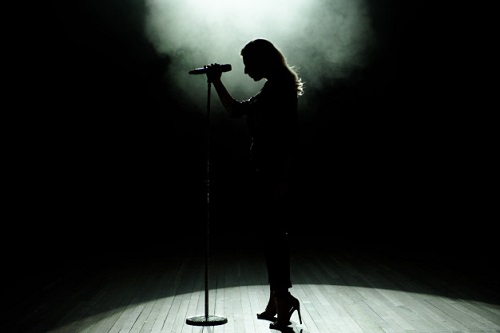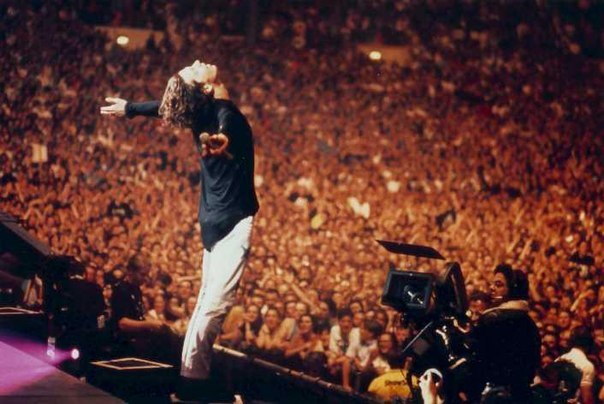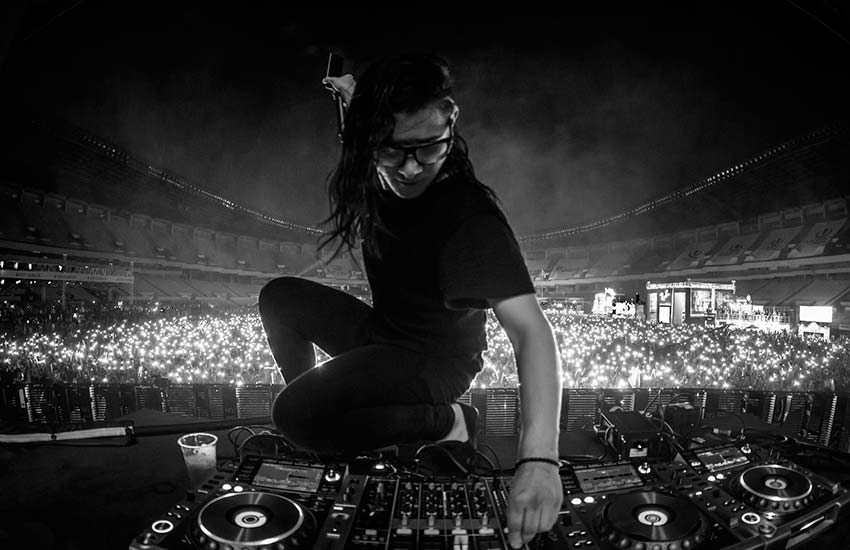Time flies…
Two days ago we were all listening to Sexy bitch by Guetta ft. Akon or I’m sexy and I know it LFMAO and now, reviewing the music that is currently playing in the clubs and that in turn has more plays on Youtube, Spotify, Itunes, Soundcloud etc. we have names like Becky G, Ozuna, J Balvin or Daddy Yankee. We woke up one morning and suddenly everything was different. Everything happened so fast…
But what has happened over the years? In this blog we will talk about how and why. And it is true that trap and reggaeton (especially the latter) have replaced and far surpassed the volume of consumption that could once be attributed to Anglo-Saxon genres such as house and some of its derivatives such as tech-house, synth pop, dance, EDM… the fact is that the new commercial genres have eaten the ground of the machineros/ poperos both on the main internet music platforms and in the dance spaces.
So what are the reasons why house music and its derivatives are no longer part of the mainstream genre circuit and mass consumption? I won’t beat around the bush: it’s all because the industry is looking for simplicity.
He said what!?
But let’s see, are reggaeton and trap necessarily simple? Here we are getting into an important garden. Simplicity in reggaeton and trap is something quite relative, because the production of both genres has its complexities, since both are genres with a lot of strength in the low end and little prominence in the high end, which makes it difficult to create a sense of a compact, well-packaged sound.
On the other hand, while techno requires a lot of attention to bass, midrange and especially treble, it is a genre whose elements require extreme order and hierarchy in order to obtain a sense of coherence and comprehensibility. On the other hand, the idea that prevails in reggaeton is to make tracks that appear to have few elements and that each one of them sounds consistent and big, so that listening to the whole track gives the sensation of a full sound with a simple instrumentation, all characterised by outlining melodies and harmonies with a tendency towards repetitive, simple and pleasant formulas.
Formulas that worked before
In general, what is sought is to attend to harmonic sequences that have precedents, that is to say, that have triumphed on a massive level in different themes, and that is why the harmony that is almost always used is this: VI IV I V. What are those Roman numerals? Well, it is the harmonic sequence shared by well-known songs such as Despacito by Luis Fonsi, or the chorus of Bailando by Enrique Iglesias.
This is all a practical matter: reggaeton artists have understood that what succeeds nowadays are repetitive formulas, a strong sound, a feeling of few but very full elements, and simple themes, melody and harmony.
And what about house?
House is the opposite, it is a pure electronic symphony: in each track there coexist many sounds with a tremendously wide timbral range, a lot of stereo movement and dynamic effects that create exaltation in the listener; build ups with heavy snares that double the speed every 4 bars, surges, breakdowns… pure frequency, dynamic, rhythmic, timbral and structural complexity.
Because the entire frequency range has to be covered, and each instrument requires a big, full sound and at the same time an abundance of instrumentation, so the distribution of the limited space that audio confers means that spectacular mixes are required, which in turn conditions production, mixing and mastering times, which often tend to get longer.
Think of it this way, if you need a lot of instruments, you need a lot of tracks, and each one of them has to be worked on to a greater or lesser extent, and while a reggaeton track might have 30 to 50, a techno track might require 80 to 120.

“I know, I know, but what are you telling me with this?”
Well, it’s very simple: a trap or reggaeton track can be finished in much less time and is much cheaper “by weight” than a house or EDM track. You have the advantage of releasing tracks quickly and you know that they will be more successful than music that requires very specific technical qualities from sound professionals. And this same point is the other advantage: the public at large.
The Internet has already proved it: at home you have all the freedom in the world to listen to the music you want, but only reggaeton and trap have those figures… there is something there that attracts everyone’s attention, it is unquestionable. But then, because it’s simpler, is it possible that it generates more consumption? Of course. Think about the environments in which you listen to music. When you put on your headphones, is it for mental exercise or to disconnect? Rarely does anyone listen to music for mental exercise, apart from certain types of music that fit in perfectly with it, such as new age, chill out or, more recently, lofi rap, which is used to encourage study in very specific situations.
Should music be downloaded and not reloaded?
At least that’s how most people use it today. The intention behind listening to music is especially to get away from the headaches of everyday life. And it could be said that Spotify, Youtube Music and nightclubs are the main places where we go to disconnect. Well, this is where the supplanting of “complex” styles by “simple” ones is understandable.
When there were not so many alternatives for dancing, house music triumphed because it is music that activates the body and makes you want to dance, but when reggaeton invaded the dance spaces, we realised that classic electronic music is not so suitable for an atmosphere of relaxation such as the discotheque. Its melodies make phrases that intertwine creating question-answer structures that capture your attention, when the important thing in a discotheque is to give free rein to nature and let loose.
What made us fall in love with the house?
And that’s just it, that’s what disco is all about: having a good time, dancing, getting drunk and flirting as much as possible, and anyone who says otherwise is lying! If we focus on the mood suggested by each genre, the rhythm of house music seems to be more oriented towards a kind of ecstasy of movement, rhythm, etc.
The dance it suggests is also more mechanical than reggaeton, which seems more suitable for sensual dancing (as we commented in the reggaetoneros know more than you do about Einstein blog). We all enjoyed house music in the past, but we enjoyed paying more attention to the build ups and the rhythmic and harmonic constructions and progressions, the melodies, the counterpoint and all the interesting features of this music. As it is more complex, it subconsciously forces us to pay more attention to it and it takes too much of the limelight.

And what about the lyrics?
Lyrics are also important when it comes to dancing. Reggaeton lyrics are also very simple (and catchy) and can be assimilated without the slightest thought. Many people think that reggaeton artists are not very bright artists judging by their lyrics, but I think just the opposite: they know that simple and catchy makes more money and they use it to their advantage. In fact, many people were wrong in predicting that reggaeton would die very soon when it started to hit hard, but they didn’t count on two things: firstly that it could adapt so well to the advance of urban music and prove to be such a versatile genre, and secondly that its simplicity could be easily digested in headphones while working out at the gym, in a Style and Zumba class, on the radio or at the discotheque.
All in all, it feels like it was only a matter of time before even house music – which in my view is the machine music with the best facelift for mass consumption – would be relegated to the realm of the fanatics, as has happened with other commercially viable music such as techno, hardcore or bumping.
The last topic of the session
I say goodbye to this blog with this great song from the time when everything was different: Don’t you worry child by Swedish House Mafia ft. John Martin, a real gem of modern music that we’ve all danced to like crazy and whose purity will never die ^^
I leave you other blogs of the style and remember that you can buy rap, trap, dembow, pop, r&b, dembow, reggaeton… instrumentals! A la carte.






